Ditapis dengan

Glossary of Soil Science Terms
- Edisi
- -
- ISBN/ISSN
- 0-089118-774-x
- Deskripsi Fisik
- 37 hlm.: ilus.; 28 cm.
- Judul Seri
- -
- No. Panggil
- 631.4014 Uni g
- Edisi
- -
- ISBN/ISSN
- 0-089118-774-x
- Deskripsi Fisik
- 37 hlm.: ilus.; 28 cm.
- Judul Seri
- -
- No. Panggil
- 631.4014 Uni g

Sustainable Agricultural Practices-Impact on Soil Quality and Plant Health
Agricultural practices involving the excessive use of chemical fertilizers and pesticides pose major risks to the environment and to human health. The development and adoption of sustainable ecofriendly agricultural management to preserve and enhance the physical, chemical, and biological properties of soils and improve agroecosystem functions is a challenge for both scientists and farmers. The…
- Edisi
- -
- ISBN/ISSN
- 978-3-0365-3217-2
- Deskripsi Fisik
- 194 hlm.
- Judul Seri
- -
- No. Panggil
- -
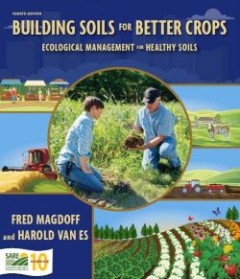
Building Soils for Better Crops: Ecological Management for Healthy Soils
The 4th edition of Building Soils for Better Crops is a one-of-a-kind, practical guide to ecological soil management. It provides step-by-step information on soil-improving practices as well as in-depth background―from what soil is to the importance of organic matter. It will show you how different physical, chemical and biological factors of the soil interconnect, and how management practice…
- Edisi
- 4
- ISBN/ISSN
- 978-1888626193
- Deskripsi Fisik
- 410 hlm.
- Judul Seri
- Handbook Series 10
- No. Panggil
- -
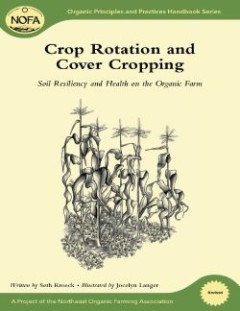
Crop Rotation and Cover Cropping: Soil Resiliency and Health on the Organic Farm
In Crop Rotation and Cover Cropping, you can learn some of the thinking behind—and the actual nuts and bolts of—laying out a rotation for your farm. This volume, part of the NOFA guides, covers: Historical roots of cover-crop techniques, Thinking beyond this season's cash crop (disease and pest reduction, weed suppression, cash vs. cover crops), What is a good rotation? (mapping the farm, g…
- Edisi
- -
- ISBN/ISSN
- 978-1-603-58346-6
- Deskripsi Fisik
- 96 hlm.
- Judul Seri
- Organic Principles and Practices Handbook
- No. Panggil
- -
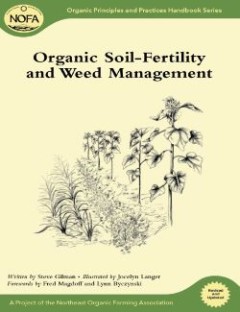
Organic Soil-Fertility and Weed Management
Soil is a living organism that loves to cooperate with farmers and gardeners. A green thumb will appear on those who align themselves with its health and requirements. This book discusses: Soil habitat, Sustaining soil fertility, The soil food-web, Nutrient availability and deficiency.
- Edisi
- -
- ISBN/ISSN
- 978-1-603-58360-2
- Deskripsi Fisik
- 157 hlm.
- Judul Seri
- Organic Principles and Practices Handbook
- No. Panggil
- -

Africa Soil Health Consortium: Handbook for Integrated Soil Fertility Management
This handbook presents Integrated Soil Fertility Management, commonly known as ISFM, as a key contributor to improving Africa's soil and crop productivity, especially for the key staples in the continent that include maize, legumes, rice, cassava, bananas, sorghum, millet and coffee. It is meant for training of extension workers on soil fertility management techniques in sub-Saharan Africa and …
- Edisi
- -
- ISBN/ISSN
- 978-1-78064-285-7
- Deskripsi Fisik
- 164 hlm.
- Judul Seri
- -
- No. Panggil
- -
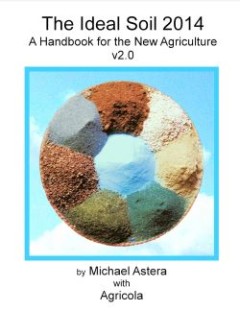
The Ideal Soil 2014: A Handbook for the New Agriculture
For too long the only measurement of food production has been bulk quantity: How many bushels or bales or tons per acre were grown. Tons and bushels are not a measure of nutritional quality. Many have spoken and written about the mineral depletion of the world's soils and the resulting nutrient deficiencies in our food. Until now few solutions have been offered other than taking a nutritional s…
- Edisi
- -
- ISBN/ISSN
- 978-0-9844876-3-9
- Deskripsi Fisik
- 171 hlm.
- Judul Seri
- -
- No. Panggil
- -
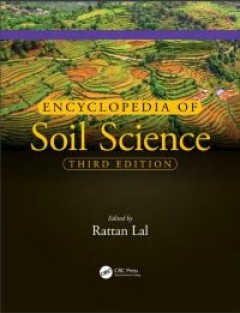
Encyclopedia of Soil Science
A ready reference addressing a multitude of soil and soil management concerns, the highly anticipated and widely expanded third edition of Encyclopedia of Soil Science now spans three volumes and covers ground on a global scale. A definitive guide designed for both coursework and self-study, this latest version describes every branch of soil science and delves into trans-disciplinary issues tha…
- Edisi
- 3
- ISBN/ISSN
- 978-1-315-16186-0
- Deskripsi Fisik
- 2795 hlm.
- Judul Seri
- -
- No. Panggil
- -
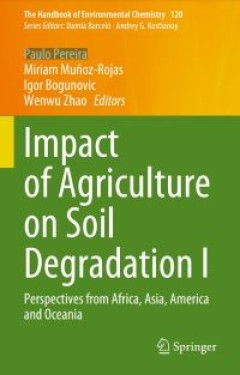
Impact of Agriculture on Soil Degradation I: Perspectives from Africa, Asia, …
This book covers the main effects of agriculture practices on soil degradation in several countries from Africa, America, Asia, and Oceania, and it elucidates the impact of chemical agents on soil quality, namely, the use of fertilizers, herbicides, pesticides, soil acidification and microplastics pollution. In these continents, a large number of the population depend on agriculture, which sets…
- Edisi
- -
- ISBN/ISSN
- 978-3-031-32168-9
- Deskripsi Fisik
- 398 hlm.
- Judul Seri
- -
- No. Panggil
- -
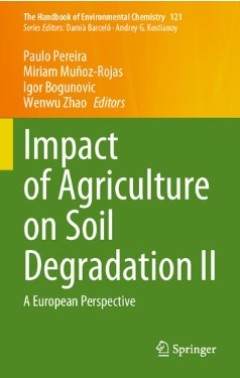
Impact of Agriculture on Soil Degradation II: A European Perspective
This is the second of two volumes that together provide a global overview of the impact of agriculture on soil degradation, tracing the most critical drivers like the use and abuse of agrochemicals, mechanization, overgrazing, irrigation, slash and burn agriculture, and the use of plastics. Soil degradation caused by agriculture practices is a complex issue which depends on the interaction of …
- Edisi
- -
- ISBN/ISSN
- 978-3-031-32052-1
- Deskripsi Fisik
- 356 hlm.
- Judul Seri
- The Handbook of Environmental Chemistry 121
- No. Panggil
- -
 Karya Umum
Karya Umum  Filsafat
Filsafat  Agama
Agama  Ilmu-ilmu Sosial
Ilmu-ilmu Sosial  Bahasa
Bahasa  Ilmu-ilmu Murni
Ilmu-ilmu Murni  Ilmu-ilmu Terapan
Ilmu-ilmu Terapan  Kesenian, Hiburan, dan Olahraga
Kesenian, Hiburan, dan Olahraga  Kesusastraan
Kesusastraan  Geografi dan Sejarah
Geografi dan Sejarah